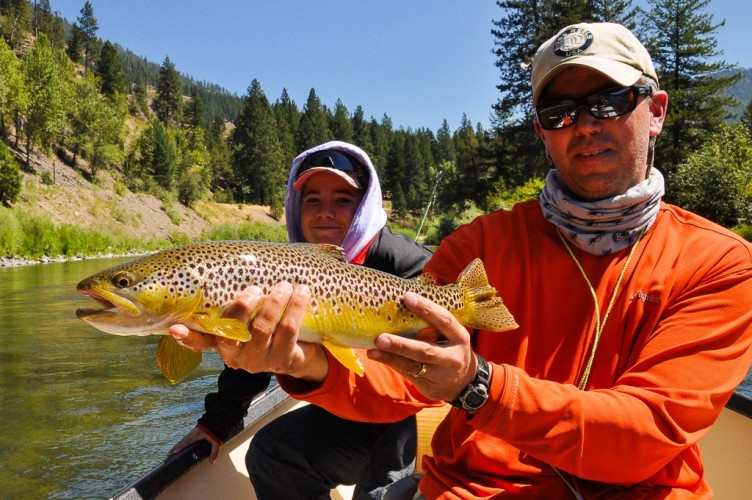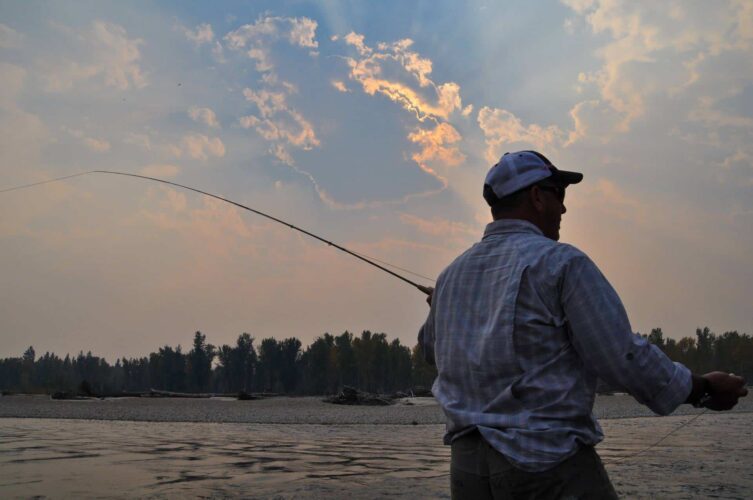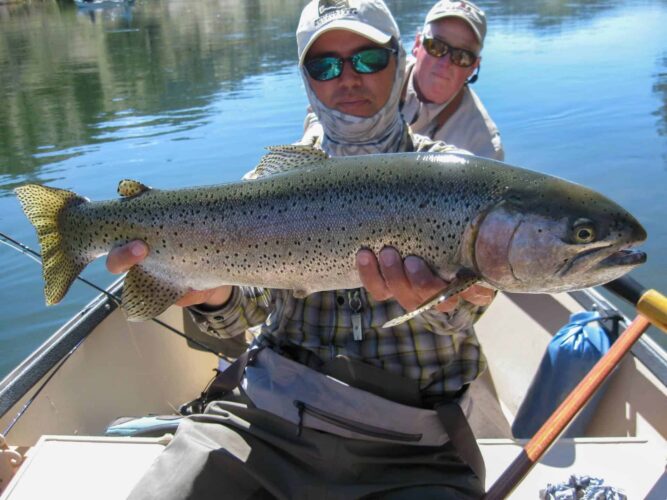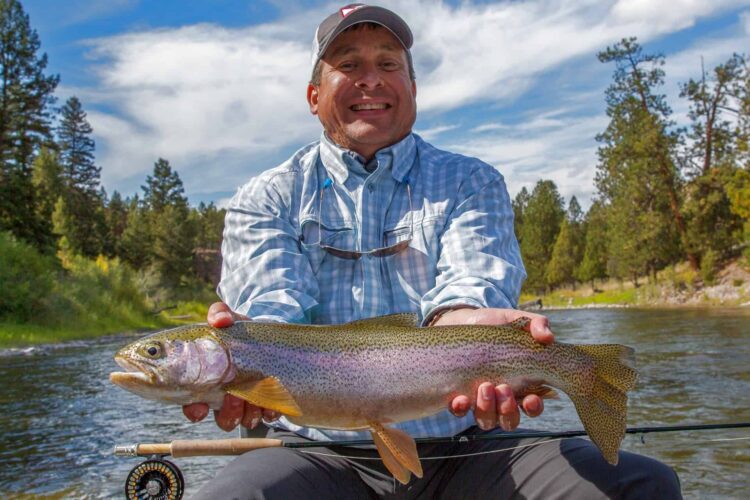How to Fish a Hopper – 3 Keys
It’s August in Montana and that means hopper season. For the next two months, grasshoppers and other terrestrials are at the top of the menu for hungry trout. It can be some of the most exciting dry fly fishing of the year, but it can also lead to some hot, frustrating sessions on the river if you don’t know how to fish a hopper effectively.
When fishing any fly it is always helpful to think about the actual bug itself. In the case of hoppers they are terrestrial insects so they hatch on land and not in the water. Have you ever watched a hopper land on the water? If so you know they don’t land gently. They usually hit the water hard and then they struggle once there. This gives you some clues on how to best fish a hopper.
There is no need for delicate presentations when hopper fishing. In fact the sound of a hopper hitting the water hard often attracts trout from a distance to investigate. That doesn’t mean you can thrash the water blindly while hopper fishing. You still need to work the water methodically, but you can deliver the fly to the water with authority on each drift. The exception to this might be fishing on spring creeks or in situations where you are sight fishing to a specific trout. In those instances, you may try a drift or two with a delicate presentation before smacking the fly in above the fish.
Water is a foreign environment for hoppers and they want out of it if at all possible. You almost always see hoppers kicking their legs and struggling when on the water. Most hopper patterns now have rubber legs sticking out all over them and when fishing moderate or faster flows the material has plenty of movement on its own during a good drift. It is a different story in slow water though. A dead drifted hopper can often go unnoticed in slow water.
That is when a subtle twitch can make all the difference. Most anglers twitch the fly too aggressively, working it almost like a bass popper. In reality, you want to impart just the slightest movement to the fly. Just a touch to make the rubber legs move and send out a few ripples. Only once every 5-10 seconds on a long drift and be ready.
Hoppers are a big meal during the summer but an infrequent one too. It’s not like a good PMD or caddis hatch where you see lots of bugs in the air and on the water. On a good day you may only see a handful of hoppers on the water. As a result, you don’t need to spend a lot of time in each spot.
Hopper fishing is more of a run and gun style. You want to cover as much water as you can in a session. One or two good drifts over each prime lie is all you need. During the summer trout know full well what a hopper is, and if they are going to eat the fly it will happen on the first drift or two. If not then move on to the next spot.
Once you understand how to fish the fly, the next step is where to fish the fly. Some hoppers can fly and there are bugs that end up in the middle of the river, but you will find the highest concentration of hoppers near the bank, especially grassy banks. Focus your efforts on those areas to find the most fish. Make a note of where you raise fish and where you don’t to help narrow down the water types you are working.
Perhaps the most overwhelming thing about hopper season is the selection of flies available. There are more varieties of hopper patterns out there than any other insect. Local knowledge is the key to success. Hoppers that work great on the Yellowstone might not raise a fish on the Bitterroot and vice versa. It is well worth it to spend a few bucks in a local fly shop to at least get in the ballpark.
How to Fish a Hopper
Size, Color, and Profile are the 3 Keys to Hopper Fishing
Size, color, and profile are the keys to hopper fishing. Those 3 variables can make for a lot of fly changes in a day if you don’t have a good system in place. When you are trying to dial in the right pattern don’t fish the same water with a new fly. Move to new water with the new fly. Start with size first. If you get no response from a size 10, drop down to a size 12 in the next spot. Still, no response then change color for the next spot and then change profile, etc. Once you find a fly they will eat then you can backtrack and fish some of the water you already covered to see if it produces with a proven fly.
Hopper eats are some of the most exciting in the game. Hook-up percentages can be quite low though. Partly because they are relatively big and buoyant flies, and also because trout don’t always eat a hopper the same way. Some explode on the fly while others come up slowly and sip it, and at times they will even bump the fly first before coming back and inhaling it. Extreme focus is required of the angler. You have to watch the fish eat the fly. That sounds relatively simple but is harder than you think. Don’t set the hook until you see the fly disappear in the fish’s mouth.
The hopper season in Montana has just started. Two months of big dry fly fishing awaits and it is time to get back on the water.






